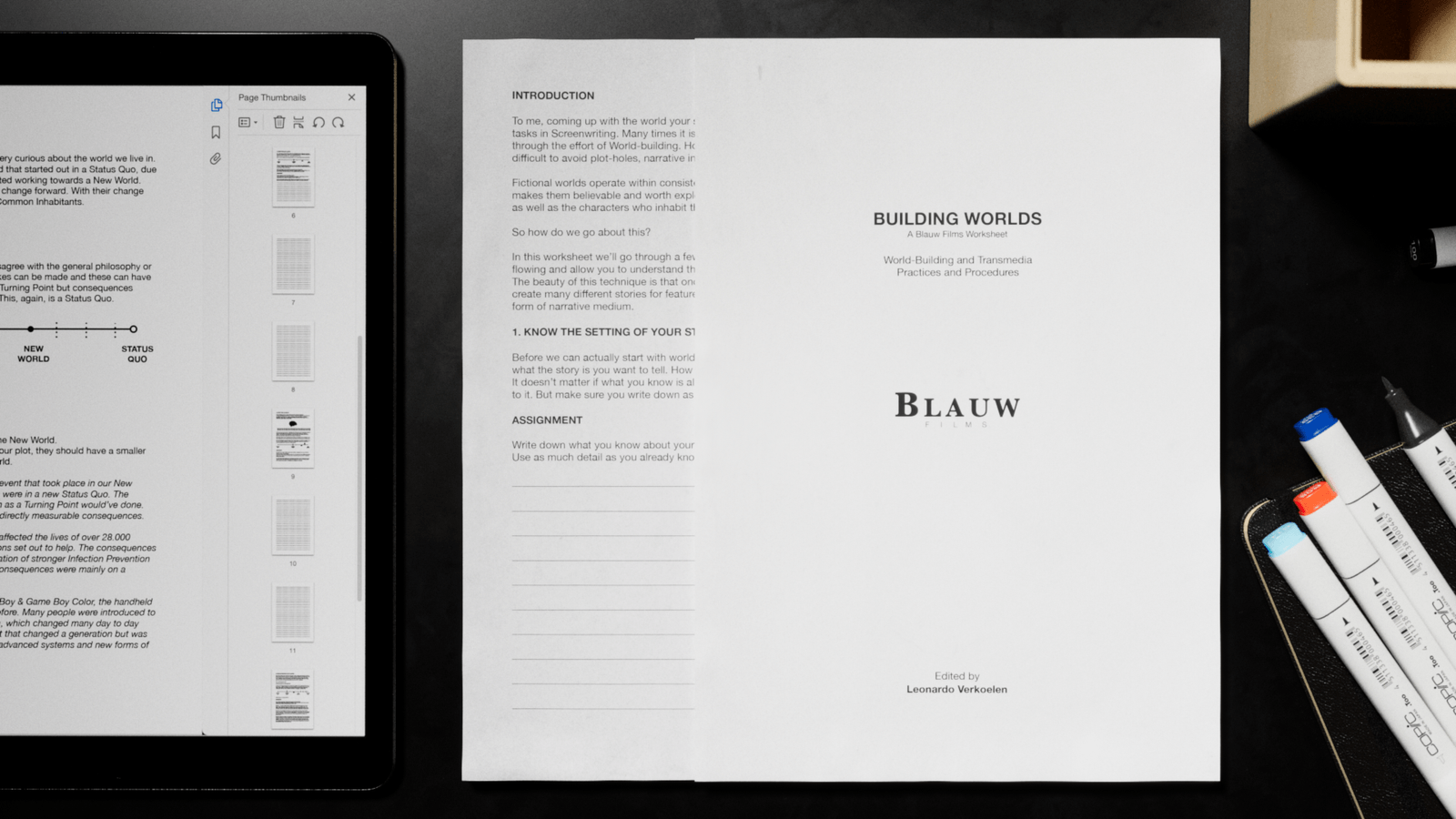Vintage Sewing Patterns that help to design 3D Fashion
Pattern Blocks is an open-source digital archive of sewing patterns
Blauw Films

The 3D garment workflow
Sewing magazines from my Grandma’s attic inspired me to collect vintage paper patterns, and use them as 2D references in the 3D garment construction workflow.
For those who are unfamiliar with what I called the “3D garment construction workflow”: it encompasses every workflow that results in a 3D cloth object. The workflow is used in games, film and 3D fashion to create 3D clothes and other cloth-based accessories (shoes, bags, hats, etc).

Pattern drafting in 3D
Constructing costumes in 3D is pretty similar to making them in real life.
First, you draw the clothes in their flat layout: the pattern. Then, you sew all the seams together, drape the garment on a character and, bam! Clothes.
If only it was actually this straightforward.
Drafting a 2D pattern is not an easy task. A basic understanding of how pattern drafting works in reality is crucial. A beginner can figure out quickly how to make a basic t-shirt in 3D. It’s mostly made up out of squares and a round neckhole. If you’re already stuck, googling a shirt’s pattern is easy and there are so many examples online. I think a beginner will be able to figure out a pair of pants and a jacket all the same.
But what about drafting a pattern for a 70’s flower power dress? Hip-hop inspired clothes? What if you were trying to construct a 19th century dress, and want to know the grain direction of the fabric? You take a good look at your haute-couture references, scratch your head and ask yourself: “how do they make it fit so effortlessly?”
Realism VS Design
Suddenly you are faced with a mountain of very specific research. Whether or not you like fashion or sewing, this can become a time-consuming deep-dive into the history of fashion and garment construction.
All you were trying to make was a cute renaissance inspired fairy dress, but now you’re staring at 50 open tabs in your browser, and are reading “Patterns of Fashion” 1 to 5 by Janet Arnould. Have you already found Bernadette Banner on Youtube?
All of this isv ery interesting, but will it effectively help you work out how to draft a believable "renaissance fairy dress"?
Fashion is 50% rules and 50% imagination. In reality, a “renaissance fairy dress” doesn’t mean anything. It doesn’t exist. But at the same time it means a thousand things, and those connotations can be interpreted as a renaissance fairy dress.

Fashion moves in cycles, is always inspired with the past, but never fully breaks free from the contemporary setting. A true renaissance dress should always be identifiable as one, and an inspired version will always wear traces of its modernity. These are important rules for the design of costume, and following them will lead to authenticity. These same rules apply to 3D fashion and costume design.
Working from realism first will take designs from 3D cloth simulations to actual garments with character.

Digital Paper Sewing Patterns
Now let’s circle back to my Grandma’s attic. Where all of this started.
The commercial paper patterns I found turned out to be a very useful tool. I wanted authentic references to trace in Marvelous Designer, so I decided to digitalize the paper patterns.
In the process of scanning, photographing and tracing, I realized how complicated it was to properly archive these paper artifacts. My copies from 1972 were ‘already’ starting to fall apart, and the criss-cross of pattern lines were sometimes hard to decipher.
The digitalisation process turned out to be a very time-consuming of a process as well. Especially to do in bulk for a 3D project or a game, which needs hunderds of characters. I searched online for any paper pattern archives, and found the Commercial Pattern Archive, aka CoPA. Their archive is a well of knowledge, but not all archived patterns are accompanied with their actual 2D pattern. And some of them are a bit too low-resolution to use for trace-overs in Marvelous Designer. Besides, they don't included any instructions. Which is absolutely essential, especially for vintage designs.
In the end, I spent a while digitizing a handful of vintage sewing patterns. The result is wonderful and actually very useful. The realism of the patterns helps immensely to give the garment shape in all the right places.

Open-source
Right now, we host the project here on Blauw Films. Pattern Blocks is completely Open-source, which means it’s free to use in both personal and commercial projects. Additionally, if you want to add to the project, you’re very welcome to do so. This can be in the form of other digitized paper patterns, or the 3D construction of any of the already existing patterns. Or perhaps you’ve found a quick method of extracting patterns from their commercial paper prints. Any and every contribution is very welcome. If you want to join the project, you can contact me directly.
But first, how about you download Pattern Blocks, and try it out for yourself?




























































































.jpg)





.jpg)

.jpg)






.png)




0 Comments